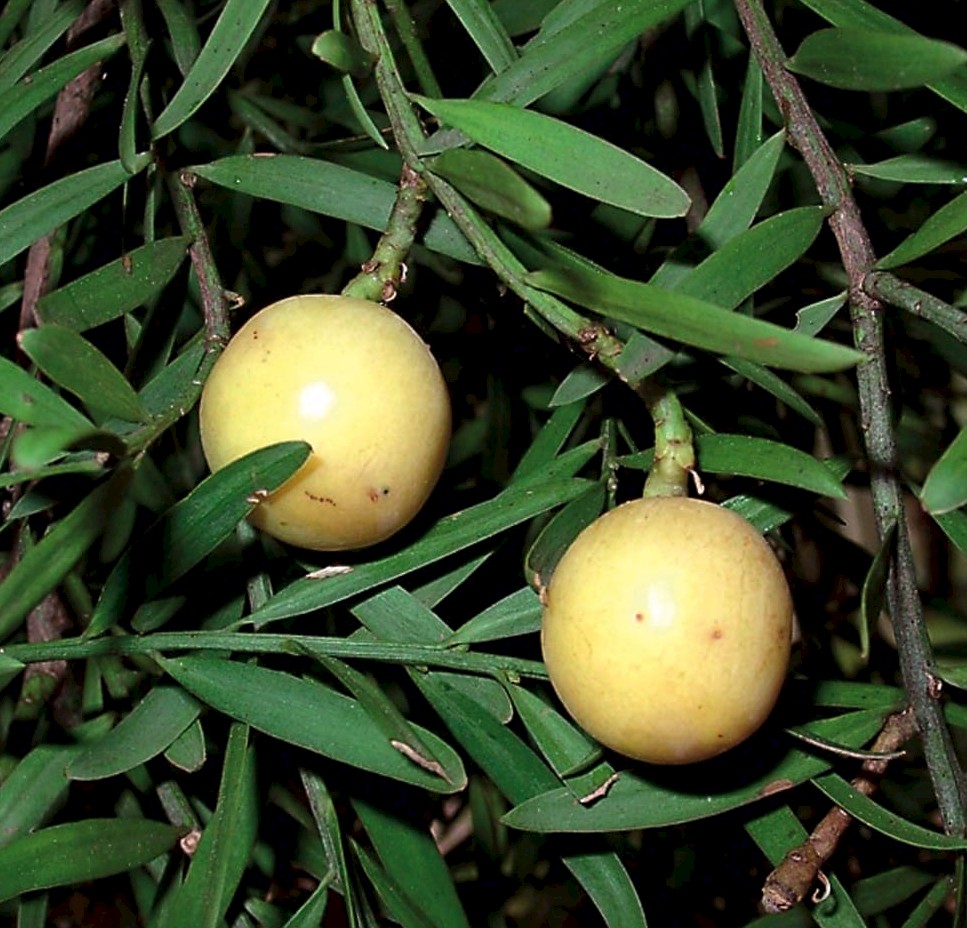Afrocarpus
Credits
Article from New Trees by John Grimshaw & Ross Bayton
Recommended citation
'Afrocarpus' from the website Trees and Shrubs Online (treesandshrubsonline.
Family
- Podocarpaceae
The six species of Afrocarpus occur in the montane forests of eastern, central and southern Africa, from Ethiopia south to the Cape. There is also one species in Madagascar (A. gaussenii (Woltz) C.N. Page) and one on the islands of the Gulf of Guinea (A. mannii (Hook. f.) C.N. Page). Afrocarpus species are large, dioecious, columnar, evergreen conifers. The branchlets are often square in section and deeply ridged. The leaves are flattened, narrowly lanceolate to elliptic, amphistomatic, and with a single midrib. They are spirally arranged, leathery with hard, acute to acuminate apices, and range in size from 2.5–15 cm long. Male strobili are solitary or rarely in groups of two to three, on short, naked, axillary peduncles. Female cones are solitary, terminal on short, naked or leafy axillary branchlets, subglobose to obovoid, enclosed in a fleshy, yellowish green to purplish black epimatium. The outer layers of the seed coat form a hard, woody shell, giving the cone a drupe-like structure (Page 1988).
Afrocarpus was formerly subsumed in Podocarpus, but differs in its large drupe-like fruit, lacking the arillate structure found in Podocarpus. It is rare in cultivation outside in our area, but is seen under glass in botanical gardens or in interior landscaping.


